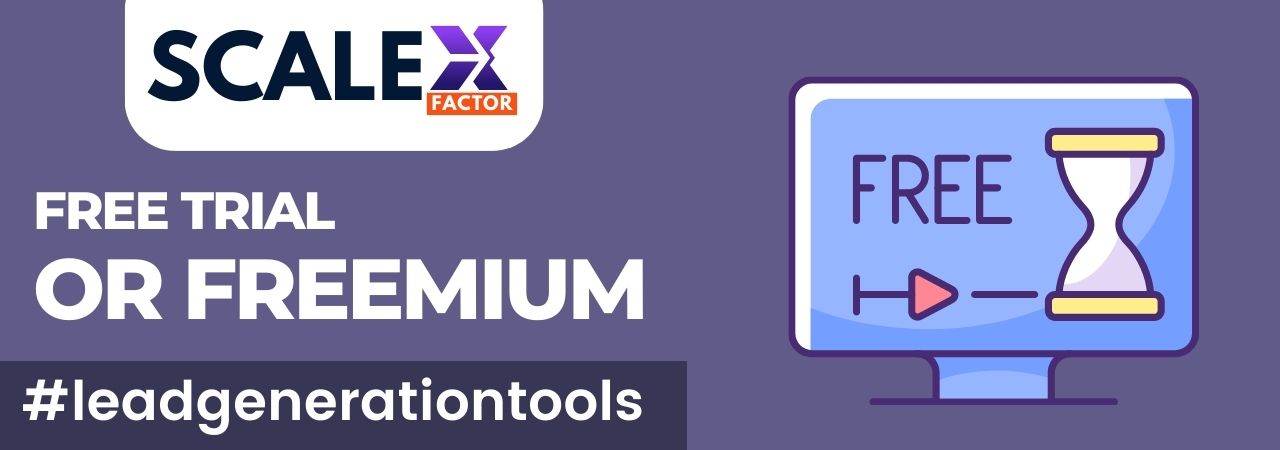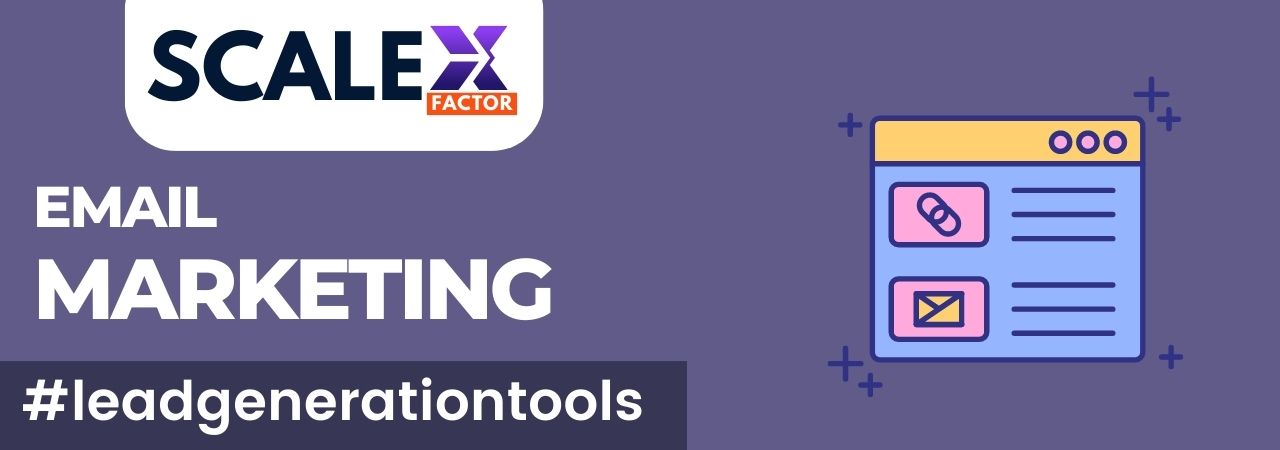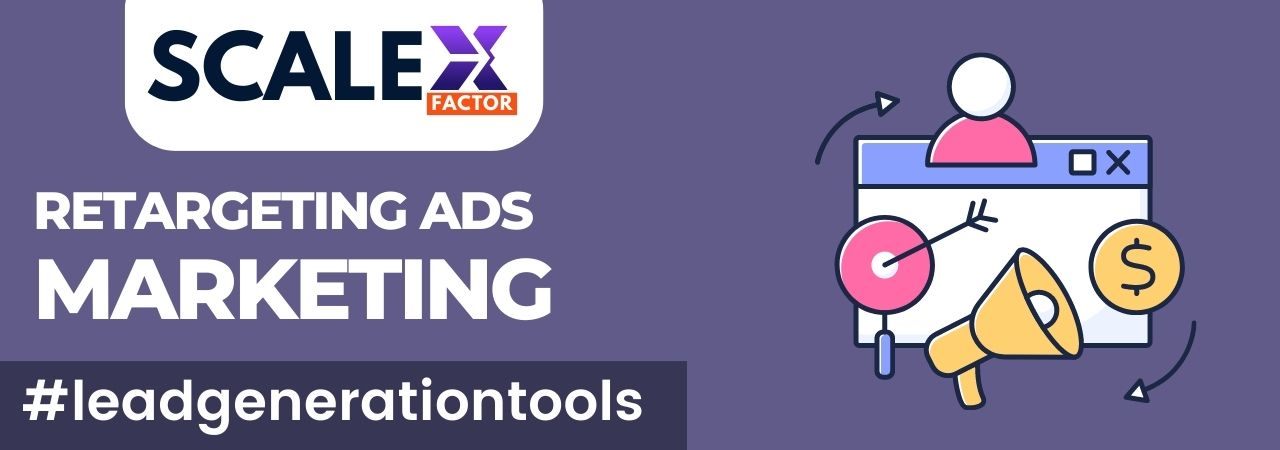Get ready to unlock the secrets of successful lead generation as we delve into the ninth part of our captivating series, “101 Ways of Lead Generation – Tools in Modern Marketing.” In this edition, we’ll equip you with invaluable knowledge on three powerful tools that will revolutionize your approach to attracting and nurturing potential customers.

Prepare to embark on a journey filled with excitement, as we reveal the strategies behind offering free trials, developing impactful email marketing campaigns, and leveraging the power of retargeting ads. Get ready to elevate your marketing game with these game-changing tools and propel your business to new heights. Let’s dive in and discover the tools that will pave the way for your success!
Best 3 Lead Generation Tools
| Tools | Lead Generation Tool | Description |
|---|---|---|
| 25th Lead Generation Tool | Offer a free trial or freemium version of your product or service. | Provide potential customers with a chance to experience your offering at no cost or a reduced price, building trust and increasing conversion rates. |
| 26th Lead Generation Tool | Develop an email marketing strategy to nurture leads. | Utilize email campaigns to engage with leads, provide valuable content, and guide them through the customer journey, ultimately increasing the likelihood of conversion. |
| 27th Lead Generation Tool | Use retargeting ads to reach prospects who have shown interest in your offerings. | Target users who have previously engaged with your brand through personalized ads, reinforcing your presence and increasing conversion rates. |
Offer a free trial or freemium version of your product or service:
Imagine having the opportunity to try out a product or service before making a commitment. That’s exactly what offering a free trial or a freemium version allows potential customers to experience. By providing a taste of what you have to offer at no cost or a reduced price, you give them a chance to see the value you provide firsthand. This strategy can be especially effective for software, online platforms, or subscription-based services.

Pros:
- Product familiarity: Free trials or freemium versions allow customers to get familiar with your product, increasing their comfort and confidence in making a purchase.
- Reduced risk: By offering a no-cost or low-cost option, you minimize the perceived risk for potential customers, making it easier for them to try your product.
- Conversion opportunity: If users have a positive experience during the trial period, they are more likely to convert into paying customers.
- Word-of-mouth marketing: Satisfied users who have tried your product for free may become advocates and share their positive experiences with others.
- Competitive advantage: Offering a free trial or freemium version sets you apart from competitors who may not provide such opportunities, giving you a unique selling point.
Cons:
- Costs: Providing free trials or freemium versions may involve upfront costs or temporarily reduced revenue.
- Limited functionality: Freemium versions often have limited features or capabilities compared to the paid version, which may not fully showcase your product’s value.
- Misaligned expectations: Some users may have unrealistic expectations or abuse the free trial, leading to disappointment or negative feedback.
- Churn rate: Customers who are solely interested in free offerings may not convert into paying customers, resulting in a higher churn rate.
- Resource allocation: Managing free trial users or freemium accounts requires additional resources, such as customer support and server capacity.
FAQs:
Q: How long should a free trial period be?
A: The duration of the trial period depends on your product or service complexity, but it’s typically between 7 to 30 days.
Q: Should I ask for payment information during a free trial?
A: It’s common to require payment information upfront, but ensure it’s easy to cancel before any charges apply.
Q: Can I limit the features in a freemium version?
A: Yes, you can offer a stripped-down version with limited features and provide additional functionality in the paid version.
Q: How can I convert free trial users into paying customers?
A: Offer special discounts or incentives for upgrading, provide excellent customer support, and showcase the value of the paid version during the trial.
Q: Can a free trial strategy work for physical products?
A: While less common, you can offer sample products, discounts, or money-back guarantees for physical products to provide a trial-like experience.
Develop an email marketing strategy to nurture leads:
In today’s digital age, email remains a powerful tool for connecting with potential customers. Developing an effective email marketing strategy allows you to nurture leads and build relationships over time. By sending targeted and personalized messages, you can provide valuable content, educate your audience, and ultimately guide them through the customer journey, increasing the chances of conversion and long-term loyalty.

Pros:
- Direct communication: Email marketing allows you to communicate directly with potential customers, delivering tailored messages and building a personal connection.
- Relationship building: Through consistent and valuable email content, you can nurture leads, foster trust, and establish yourself as an authority in your industry.
- Segmentation and personalization: Email marketing tools enable you to segment your audience and deliver personalized messages based on their interests, preferences, or behavior.
- Cost-effective: Compared to traditional marketing channels, email marketing is cost-effective, making it accessible for businesses of all sizes.
- Automation and scalability: Email marketing platforms offer automation features that allow you to scale your efforts, reach a larger audience, and save time.
Cons:
- Inbox competition: With crowded inboxes, it can be challenging to stand out and avoid having your emails marked as spam or ignored.
- Unsubscribes and opt-outs: Some recipients may choose to unsubscribe or opt out of receiving further emails, reducing your reach and potential conversions.
- Technical challenges: Email marketing requires knowledge of email design, copywriting, and handling email delivery issues, which may present a learning curve.
- Compliance and regulations: Adhering to email marketing laws and regulations, such as obtaining consent and providing an opt-out option, is crucial to avoid legal issues.
- Overwhelming frequency: Sending too many emails or bombarding subscribers can lead to fatigue and disengagement.
FAQs: Q: How often should I send marketing emails?
A: It depends on your audience and the type of content you provide. Aim for a balance between staying on their radar without overwhelming them.
Q: How can I improve email open rates?
A: Use compelling subject lines, personalize messages, provide valuable content, and segment your audience for more targeted emails.
Q: What types of content should I include in marketing emails?
A: Include educational content, promotions, industry news, customer success stories, and exclusive offers to keep your subscribers engaged.
Q: Can I buy email lists for my marketing campaigns?
A: It’s best to grow your email list organically by obtaining consent from interested individuals. Buying lists may lead to low engagement and legal complications.
Q: How do I measure the success of my email marketing efforts?
A: Track metrics like open rates, click-through rates, conversions, and overall engagement using email marketing analytics tools.
Use retargeting ads to reach prospects who have shown interest in your offerings:
Have you ever visited a website, only to find ads from that same website following you around as you browse the internet? That’s the power of retargeting ads. This marketing technique allows you to target individuals who have previously engaged with your brand, such as visiting your website or interacting with specific content. By staying top-of-mind and reminding them of your offerings, retargeting ads can significantly increase conversion rates and maximize your marketing efforts.

Pros:
- Increased conversion rates: Retargeting ads target individuals who have already shown interest, making them more likely to convert into customers.
- Brand reinforcement: By displaying your ads across different websites, you reinforce your brand’s presence and stay on the radar of potential customers.
- Personalized messaging: Retargeting ads allow you to create personalized messages based on users’ previous interactions, increasing relevancy and engagement.
- Ad optimization: Retargeting platforms often provide detailed analytics and insights, enabling you to optimize your ads for better performance and ROI.
- Cost-effective: Compared to some other advertising methods, retargeting ads can be cost-effective since they target a specific audience that has already expressed interest.
Cons:
- Ad fatigue: Displaying the same retargeting ads repeatedly may lead to ad fatigue, potentially causing annoyance or negative perception of your brand.
- Limited reach: Retargeting ads only target users who have interacted with your brand before, limiting your reach to new audiences.
- Privacy concerns: Some users may have concerns about their browsing history being used for targeted advertising, leading to skepticism or ad-blocking.
- Ad-blocking software: With the increasing use of ad-blocking software, there’s a chance that retargeting ads may not reach all intended users.
- Ad frequency control: Ensuring the right frequency and timing of retargeting ads can be challenging to avoid overwhelming users with excessive ads.
FAQs:
Q: How does retargeting work?
A: Retargeting uses cookies or pixel-based tracking to identify users who have visited your website and display relevant ads to them across various websites they visit.
Q: Can retargeting ads be intrusive?
A: It’s essential to strike a balance between staying visible and avoiding excessive frequency to prevent users from feeling overwhelmed or annoyed.
Q: How can I create effective retargeting ads?
A: Use compelling visuals, persuasive copy, and clear calls-to-action that align with users’ previous interactions or interests.
Q: Should I retarget all website visitors or specific segments?
A: It’s often more effective to segment your audience and create personalized retargeting campaigns tailored to their specific interests or actions.
Q: How can I measure the success of my retargeting campaigns?
A: Track metrics like click-through rates, conversion rates, and return on ad spend (ROAS) using retargeting analytics tools or platforms.




